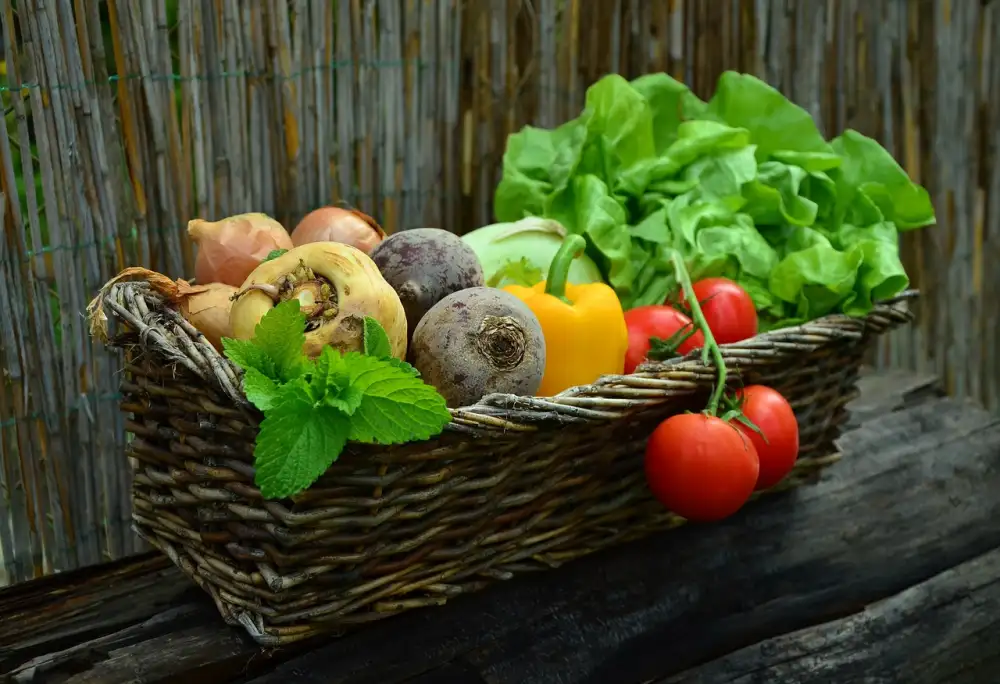Mastering the Art of Rhubarb Harvest: When is the Best Time to Pick?

Rhubarb, with its vibrant red stalks and tart flavor, is a versatile and beloved ingredient in many culinary creations. But before you can enjoy the deliciousness of rhubarb in your dishes, it's important to understand the art of rhubarb harvesting. Knowing when and how to pick this vegetable will ensure that you get the best quality and flavor from your harvest. In this article, we will guide you through the process of mastering the art of rhubarb harvesting, from understanding its growth cycle to storing and preserving it for future use. So let's dive in and discover the secrets of picking rhubarb at its prime!
Understanding Rhubarb Growth Cycle
To master the art of rhubarb harvesting, it is crucial to have a good understanding of its growth cycle. Rhubarb is a perennial plant that goes through distinct stages throughout the year. In early spring, rhubarb emerges from its dormant state, sending up vibrant red stalks and large green leaves.
During this initial stage, the plant focuses on establishing a strong root system and developing new growth. As the season progresses, the stalks continue to grow taller and thicker, while the leaves expand in size. This period of rapid growth is essential for ensuring a bountiful harvest later on.
In mid-summer, rhubarb reaches its peak growth phase. The stalks become fully matured and reach their maximum size and color intensity. At this stage, the plant channels most of its energy into storing nutrients in the roots for next year's growth.
Towards late summer or early fall, rhubarb starts to slow down its growth rate. The stalks may become thinner and less vibrant in color as they prepare for dormancy during winter. It is during this time that the plant begins to divert energy from above-ground growth towards root development.
Understanding these different stages of rhubarb's growth cycle is crucial for determining when it is ready for harvest. By closely observing your plants throughout the season, you can ensure that you pick them at their prime and enjoy the best flavor and texture in your culinary creations.
Signs of Rhubarb Readiness for Harvest
Before you rush to harvest your rhubarb, it's essential to know the signs that indicate it's ready to be picked. One of the first indicators is the size of the stalks. Mature rhubarb stalks should be at least 10-15 inches long and have a diameter of about an inch or more.
Another sign to look out for is the color of the stalks. When rhubarb is ready for harvest, the stalks will have a vibrant and rich hue, usually deep red or pink. Avoid picking rhubarb with green or pale-colored stalks as they are not fully matured and may lack flavor.
Additionally, check the texture of the stalks. Gently feel them; they should be firm and crisp. If they feel soft or mushy, it means they are overripe and past their prime for harvesting.
Remember that rhubarb plants need time to establish themselves before being harvested. It's recommended to wait until the second year after planting before starting to harvest. This allows the plant to develop strong roots and ensures a healthier yield in subsequent years.
By paying attention to these signs, you can ensure that you pick your rhubarb at its peak ripeness, guaranteeing maximum flavor and enjoyment in your culinary creations.
Best Time to Harvest Rhubarb
The best time to harvest rhubarb is in the spring, typically from April to June. This is when the plant is at its peak growth and the stalks are firm and vibrant in color. It's important to wait until the rhubarb plant has matured for at least two years before harvesting, as this allows it to establish a strong root system. Harvesting too early can weaken the plant and affect future yields. By waiting until the second year, you ensure that the rhubarb has enough energy stored in its roots to produce a bountiful harvest.
How to Harvest Rhubarb Correctly
To harvest rhubarb correctly, it is important to follow a few simple steps. First, wait until the plants are at least three years old before harvesting. This allows the rhubarb to establish a strong root system. When you're ready to harvest, grasp the stalk firmly near the base and pull it upwards with a gentle twist. Avoid cutting the stalks as this can lead to rotting and disease. Only harvest about one-third of the plant at a time to ensure its continued growth. Remember, always remove any flower stalks that appear, as they divert energy from the plant. By following these guidelines, you'll be able to enjoy your freshly harvested rhubarb in all its delicious glory!
Storing and Preserving Rhubarb
To make the most of your rhubarb harvest, it's important to know how to store and preserve this versatile vegetable. Here are a few tips to help you keep your rhubarb fresh for longer:
1. Refrigeration: Rhubarb can be stored in the refrigerator for up to two weeks. Simply wrap the stalks in a damp paper towel and place them in a plastic bag or container. This will help retain moisture and prevent wilting.
2. Freezing: If you have an abundance of rhubarb, freezing is a great option. Start by washing and cutting the stalks into small pieces. Blanch them in boiling water for 1-2 minutes, then transfer to an ice bath to cool. Drain well and pack into freezer-safe bags or containers. Frozen rhubarb can be stored for up to a year.
3. Canning: Another way to preserve rhubarb is through canning. Prepare jars and lids by sterilizing them in boiling water. Cut the rhubarb into desired lengths and pack tightly into the jars, leaving about 1 inch of headspace. Make a simple syrup by dissolving sugar in water, then pour it over the rhubarb, ensuring all pieces are covered. Process the jars according to canning guidelines.
Remember, when using preserved rhubarb, adjust recipes accordingly as it may have a slightly softer texture than fresh rhubarb. With these storage methods, you can enjoy the tangy goodness of rhubarb long after its harvest season has ended!
Tips for Maximizing Rhubarb Yield
1. Fertilize properly: To ensure a bountiful harvest, it is essential to provide rhubarb plants with adequate nutrients. Apply a balanced fertilizer in early spring and again after the first harvest.
2. Mulch around the plants: Mulching helps retain moisture in the soil and suppresses weed growth. Apply a layer of organic mulch, such as straw or compost, around the base of the plants.
3. Regularly water: Rhubarb requires consistent moisture to thrive. Water deeply once a week during dry spells, ensuring that the soil remains evenly moist but not waterlogged.
4. Remove flower stalks: As soon as you notice flower stalks emerging from your rhubarb plants, promptly remove them. Flowering diverts energy away from producing edible stalks, so removing them will help maximize your yield.
5. Divide overcrowded plants: Over time, rhubarb plants can become overcrowded, leading to reduced yields. Divide mature clumps every 4-5 years to maintain plant vigor and increase productivity.
6. Control pests and diseases: Regularly inspect your rhubarb plants for signs of pests or diseases such as aphids or crown rot. Take appropriate measures to control these issues promptly and prevent them from affecting your yield.
By following these tips, you can ensure that your rhubarb plants are healthy and productive, providing you with an abundant supply of delicious stalks throughout the growing season.
Harvesting rhubarb at the right time is crucial to ensure its optimal flavor and texture. By understanding the growth cycle and signs of readiness, you can confidently pick rhubarb when it's at its peak. Remember to harvest stalks that are thick and firm, with vibrant colors. Proper harvesting techniques will help preserve the plant's health for future growth.
Once harvested, make sure to store rhubarb properly to maintain its freshness. Whether freezing or preserving it in various forms like jams or compotes, you can enjoy the tangy goodness of rhubarb all year round. Don't forget to maximize your yield by fertilizing and dividing the plant regularly.
So, get ready to elevate your cooking skills with freshly harvested rhubarb! Its unique tartness will add a delightful twist to pies, crumbles, and even savory dishes like chutneys or sauces. With these tips in mind, you'll be able to savor the true essence of this versatile springtime delight. Happy harvesting and happy cooking!
Published: 25. 11. 2023
Category: Home



